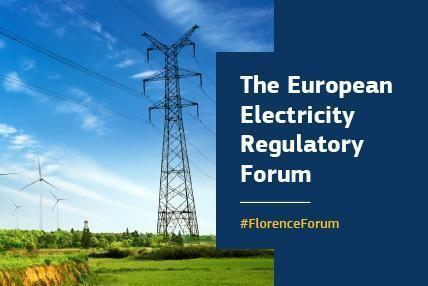A fully functioning and interconnected internal energy market is crucial for maintaining security of energy supply, increasing competitiveness and ensuring that all consumers can buy energy at affordable prices.
An interconnected electricity market
Europe’s cross-border electricity networks are operated according to rules that help govern the work of operators and determine how access to electricity is given to users across the EU. In the past, these grid operation and trading rules were drawn up nationally. As electricity is increasingly interconnected between countries, the EU-wide rules effectively manage these electricity flows in the internal energy market.
These rules, known as network codes or guidelines, are legally binding European Commission implementing Regulations. They govern all cross-border electricity market transactions and system operations alongside the Regulation on conditions for accessing the network for cross-border electricity exchanges ((EC)714/2009).
Development of network codes and guidelines
Each year, the European Commission draws up an 'annual priority list' of areas to be included in the development of network codes for electricity, with input from a public consultation.
The Commission, with further input from the Agency for the Cooperation of Energy Regulators (ACER) and the European Network of Transmission System Operators for Electricity (ENTSO-E), adopts proposals for network codes. The proposals for network codes are checked by an Electricity cross-border committee of specialists from national energy ministries and then adopted with the approval of the Council of the European Union and the European Parliament.
Sometimes the new rules are adopted as 'guidelines' rather than 'network codes.' These are adopted under a different provision of the Electricity Regulation (EC) No 714/2009 but they have the same status – they are both legally binding regulations.
The Electricity Regulatory Forum (Florence Forum)

The forum, also referred to as the Florence Forum, was set up to discuss the creation of the internal electricity market.
The forum participants include national regulatory authorities, EU countries’ governments, the European Commission, transmission system operators, electricity traders, consumers, network users, and power exchanges.
Since 1998, the forum has met once per year in Italy. The meeting presentations and reports from all Florence fora are listed in chronological order in a dedicated document management tool (CIRCABC), which is open to the public. The most recent meetings are listed below
Market and trading guidelines
Capacity allocation and congestion management
The Regulation (EU) 2015/1222 establishing a guideline on capacity allocation and congestion management (CACM) entered into force on 15 August 2015. The provisions of CACM govern the establishment of cross-border EU electricity markets in the day-ahead and intraday timeframes, as well as methods for the calculation of interconnection capacity.
Forward capacity allocation
The Regulation (EU) 2016/1719 establishing a guideline on forward capacity allocation (FCA) entered into force on 17 October 2016. The provisions of FCA establish a framework for the calculation and allocation of interconnection capacity, and for cross-border trading, in forward markets (i.e. timeframes longer than day-ahead).
Balancing
The Regulation (EU) 2017/2195 establishing a guideline on electricity balancing (EB) entered into force on 18 December 2017. The balancing guideline will set down rules on the operation of balancing markets, i.e. those markets that transmission system operators (TSOs) use to procure energy and capacity to keep the system in balance in real time. The objectives of the guideline include increasing the opportunities for cross-border trading and the efficiency of balancing markets.
Connection and system operation codes and guidelines
Emergency and restoration
The Regulation (EU) 2017/2196 establishing a network code on emergency and restoration entered into force on 18 December 2017. The emergency and restoration network code will set down rules relating to the management of the electricity transmission system in the emergency, blackout and restoration states. The main objective of the relevant rules is to bring the system back to the normal state.
Demand connection
The Regulation (EU) 2016/1388 establishing a network code on demand connection (DCC) entered into force on 7 September 2016. The provisions of DCC set out detailed rules relating to the connection of, principally, new demand facilities to national electricity networks.
Requirements for generators
The Regulation (EU) 2016/631 establishing a network code on requirement for grid connection of generators entered into force on 17 May 2016. The provisions of the regulation set out detailed rules relating to the connection of, principally, new power generating installations to national electricity networks.
High-voltage direct current
The Regulation (EU) 2016/1447 establishing a network code on requirements for grid connection of high-voltage direct current system and direct current-connected power park modules (HVDC) entered into force on 28 September 2016. The provisions of HVDC set out detailed rules relating to the connection of, principally, new high-voltage direct current systems to national electricity networks.
System operation
The Regulation (EU) 2017/1485 establishing a guideline on electricity transmission system operation (SO) entered into force on 14 September 2017. The provisions of SO establish a framework for the maintenance of the secure operation of the interconnected transmission system in real time.
Documents
Related links
- Security of electricity supply
- Commission Decision on the establishment of the annual priority lists for the development of network codes and guidelines for 2018 (2018/496/EU); 2017 (2017/89/EU); 2016 (2015/1960)
- Regulation on Conditions for Access to the Network for Cross-Border Exchanges in Electricity (714/2009/EC)
- Commission Regulation (EU) No 543/2013 on submission and publication of data in electricity markets and amending Annex I to Regulation (EC) No 714/2009 of the European Parliament and of the Council
- Regulation on laying down guidelines relating to the inter-transmission system operator compensation mechanism and a common regulatory approach to transmission charging (838/2010/EU)
- Study: Implementation of the network code on requirements for grid connection of generators
- Agency for the Cooperation of Energy Regulators (ACER)
- European Network of Transmission System Operators for Electricity (ENTSO-E)
- European Stakeholder Committees
